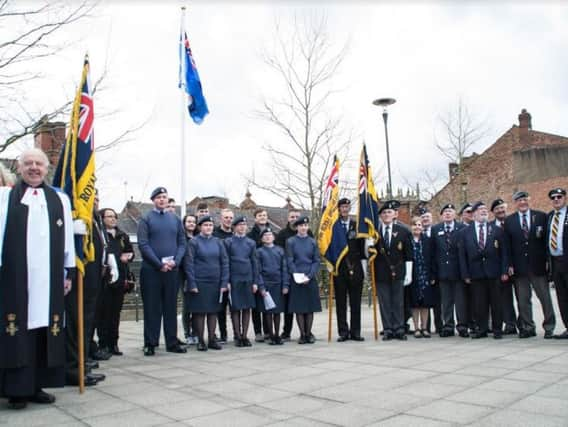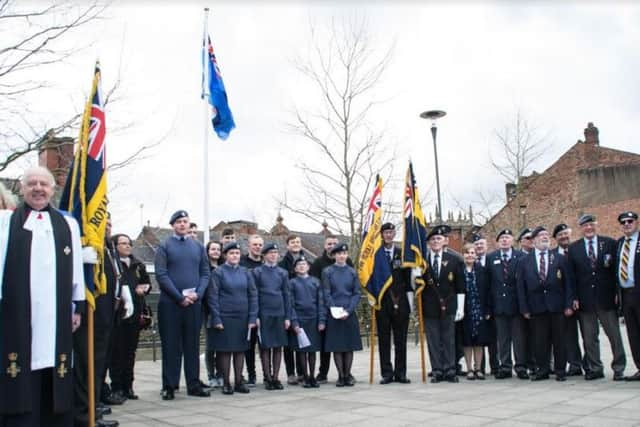Through adversity to the stars - 100 years of the RAF


On April 1 1918 the Royal Air Force was born when the Royal Flying Corps and the Royal Naval Air Service merged - becoming the world’s first independent air force.
The Ministry of Defence said that at the outbreak of the First World War in August 1914, the Royal Flying Corps had 146 officers and around 100 aircraft. The Royal Naval Air Service had over 700 personnel, 93 aircraft, two balloons and six airships. By the end of the war in November 1918, the Royal Air Force had grown in strength to 27,000 officers and 260,000 other personnel operating more than 22,000 aircraft.
Advertisement
Hide AdAdvertisement
Hide AdOUR VIDEO SHOWS: The RAF community in the borough celebrating the organisation's 100th anniversary on Sunday. The ensign was hoisted and air cadets provided a drum corps. The Rector of Wigan presided.


In 1919, a converted out-of-service RAF Vickers Vimy heavy bomber, a type of aircraft used during the First World War, was flown by former RAF pilots Captain John Alcock and Lieutenant Arthur Whitten-Brown from Newfoundland to Galway, Ireland, on the first non-stop transatlantic flight.
A key moment in RAF history was the Battle of Britain in the Second World War, as it was the first major battle to be fought entirely by air and was a critical factor in preventing a Nazi invasion of Britain. Lasting from July 10 to October 31 1940, the Luftwaffe had about 3,000 fighters and bombers pitted against the RAF’s 1,200. The RAF victory led to Winston Churchill’s famous remark that “never in the history of human conflict has so much been owed by so many to so few”.
The Mark 1 Spitfire, with eight machine guns in the wings, entered service with the RAF on August 19 1939, and at the outbreak of war only 182 were in service. It was the only Allied fighter to see continuous frontline service from 1939 to 1945.
Advertisement
Hide AdAdvertisement
Hide AdWith radar used during the Second World War by both the RAF and Germans, it was during this conflict that the British employed countermeasures such as electronic jamming.


The biggest bomb dropped during the Second World War was known as the Earthquake Bomb or the Grand Slam and weighed 22,000lb. Mr Hendrix said these were dropped from RAF Lancasters in 1944 and 1945.
The British-designed Harrier Jump Jet entered RAF service in 1969, making the RAF the first in the world to use its revolutionary vertical take-off and landing capabilities. The Harrier saw active service in the war to regain the Falkland Islands in 1982, proving its impressive manoeuvrability in combat.
The supersonic Tornado, which is due to go out of service next year after nearly four decades of operations, was designed to fly at very low altitudes. It has been at the forefront of RAF operations since its introduction, including the campaign to eradicate Islamic State in Syria and Iraq.
Advertisement
Hide AdAdvertisement
Hide AdThe UK currently has 14 F-35s, the world’s most advanced fighter jet, being tested in the United States ahead of flight trials off the aircraft carrier HMS Queen Elizabeth later this year. Chief of the air staff * Figures show that as of April last year there were 828 RAF aircraft. As of January this year there were more than 36,963 service men and women in the RAF - both regular and reserves.
The Latin motto of the RAF, Per ardua ad astra, translates to English as ‘through adversity to the stars’.